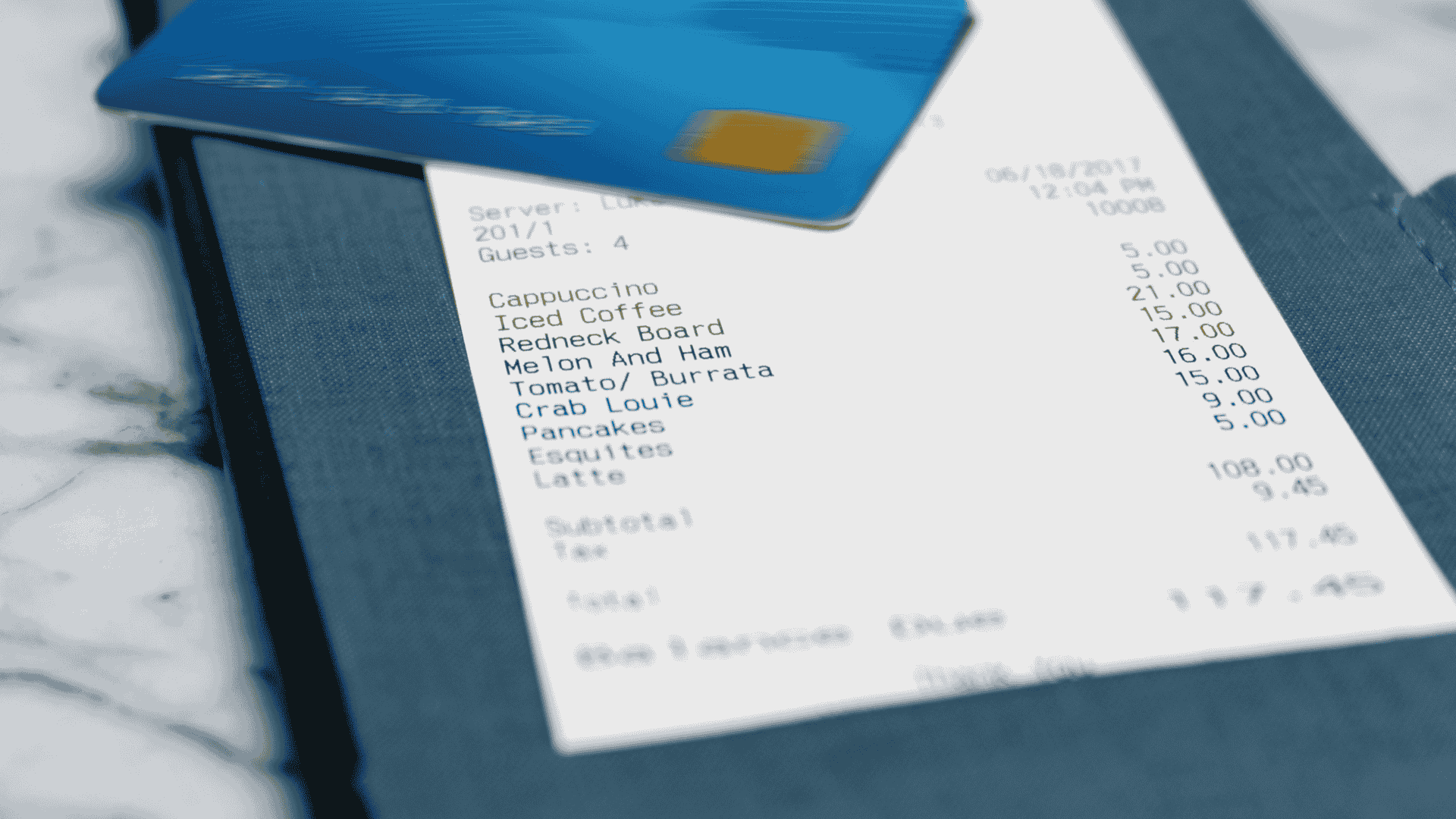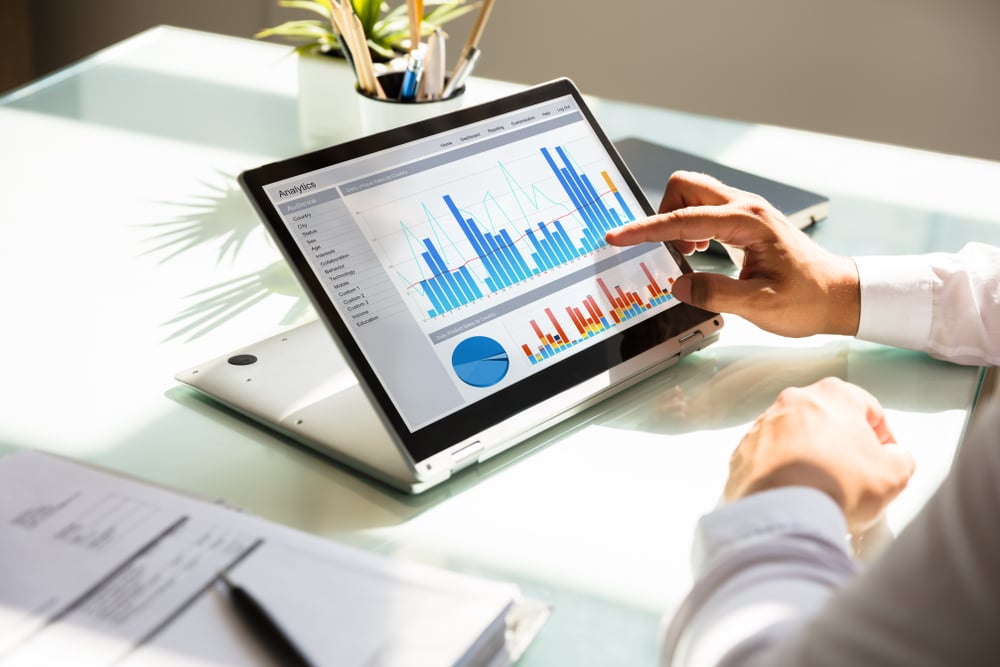Operating a successful hospitality business means you always need to be on your toes.
Profit margins are often very small, requiring a high level of finance management to run a sustainable venue.
In this blog, we'll detail some of the key components of restaurant financial management, the terms and concepts you need to know, and how tools like ResDiary can help.
The fundamentals of restaurant finance management
While restaurant financial management can feel highly complex, there are a few key concepts at the heart of it all. Some of the most important restaurant finance concepts to understand are:

- Revenue: Revenue is simply the amount of money your business generates. It's a key data point to compare with your expenses to understand your financial performance.
- Expenses: Expenses refers to the money spent to keep your restaurant operational. Some of the key expenses for restaurants include cost of goods sold (COGS), labour costs, and utilities. Properly understanding expenses in your restaurant is vital for the financial sustainability of your business.
- Profit margin: Profit margins can be calculated in several different ways. Understanding your profit margin involves taking your revenue, subtracting some amount of expenditure, and presenting the resulting figure as a percentage. Net profit margin is calculated by subtracting all expenses from your revenue, while gross profit margin is calculated by only subtracting your COGS.
- Reporting: Reporting is looking back over data and analysing it. Reporting on financial metrics in your venue gives you the opportunity to regularly review your restaurant's standing. It's important to have processes in place to gather and review your financial data. This will alert you to any issues that arise and allow you to make the best decisions for your business.
What are the most important financial metrics for restaurants?
To manage finances as effectively as possible in your restaurant, there are numerous metrics for you to familiarise yourself with. For more information, check out our complete guide to restaurant KPIs.
Sales
Sales is a measurement of the revenue you're generating from the main operations of your business. It can include food, drinks, gift vouchers, and more.
Sales will make up the bulk, if not all, of your revenue. Your business may also be generating revenue from another source, such as advertising other businesses within your restaurant. You'll need to factor in this revenue when calculating other metrics like your profit margin.
Understanding how much money your business is generating provides crucial context for other metrics like your expenses. You can also make great use of sales data by comparing your current data with historical metrics.
One of the easiest ways to track sales data is with an electronic point of sale (EPOS) system. There are many options on the market like PowerEPOS from Triniteq and Access EPoS which can be used to record and report on your sales.
Cost of goods sold
This metric tracks the money you've spent on food, drinks and other key revenue drivers for your business. These are some of the largest and most significant expenses for a business, so properly tracking them is critical.
Once you understand your COGS, you'll have important context for your sales. You might be generating a significant amount of sales from your food and drink, but if your COGS is too high, your restaurant won't achieve a sustainable profit.
This metric can be tracked as part of your inventory management. Any orders you make for food and drinks must be recorded and calculated to understand your COGS.
Food cost percentage
Once you know the amount of COGS attributable to food, you can calculate your food cost percentage. To do this, take your food COGS over a given time period and divide it by your food sales over that same time period. Multiply the resulting number by 100.
This tells you how much of your food-related revenue is being spent on COGS.
Restaurants often target 28-35% as an ideal food cost percentage.

Labour costs
Labour costs are a substantial expense for any restaurant. They cover money spent on wages, but can also cover additional expenses like workplace pensions or superannuation.
Properly tracking and understanding your labour costs will let you know whether you are spending a manageable amount of money on your staff, or if you need to bring down your costs.
Gross and net profit
Gross profit is calculated by deducting your COGS from your gross sales. Net profit is calculated by deducting all business expenses from your gross sales. This provides a more comprehensive metric for understanding the profitability of your restaurant by taking all costs into consideration.
If after conducting these calculations you have a negative figure, that means your business is likely operating at a loss.
Gross and net profit are currency amounts, but like food cost percentage, you can translate them into profit margins represented as percentages. This is done by dividing the gross or net profit by the revenue, and multiplying the number by 100. These key figures let you know how much money can be put back into your venue or paid out to business owners.
Ultimately, the goal of any business is to generate profit, so it's very important to track these metrics to understand the health of your restaurant finances.

Break-even point
The break-even point of your business is where your total revenue equals your total costs. You can calculate this metric simply by taking your fixed costs (like rent, wages, and licensing fees) and dividing them by your gross profit margin.
Your break-even point is crucial for restaurant owners and investors to understand when they will see a return on their investment.

Prime cost
Prime cost is a metric used to understand the total variable costs of your business. It's calculated by adding your COGS to your labour costs. It’s a crucial catch-all metric for understanding a restaurant’s finances.
Your prime cost may shift significantly from one period of time to another, making it an extremely valuable metric for understanding your venue's financial health.

Restaurant finance statements explained
While creating and understanding your venue's key financial metrics is important, they aren't all that useful in a vacuum. One of the best ways to get more context around these metrics is with financial statements.
If you're a venue owner or operator, here are a few key statements for you to understand:
Profit and loss statement
A profit and loss statement is used to compile your sales and expenses. It's an extremely helpful way to see your major costs and how they compare to the money that is being brought in.
For example, you might use a profit and loss statement to understand how your utility or marketing expenses are affecting your ability to make a profit.
Cash flow statements
A cash flow statement can be thought of as a more comprehensive form of a profit and loss statement. It involves looking at all cash inflow and cash outflow over a given time period, such as a year.
In addition to sales and other forms of operational revenue, cash inflow also includes any external financing your venue has received, or money that is being paid off over time.
Cash outflow includes general business expenses, and can also include things like paying off loans. A cash flow statement gives you a bird's eye view of the current financial state of your business, making it a critical part of restaurant financial management.
Balance sheet
Creating a balance sheet for your business involves breaking down the finances of your business into assets, liabilities, and equity.
- Assets are anything that holds quantifiable value for your business, like cash and inventory.
- Liabilities are your the financial obligations of your business, or money that you owe. This includes loans you are paying off and rent expenses.
- Equity is the value of your assets minus the value of your liabilities.
While a cash flow statement provides a snapshot of the financial state of your business, a balance sheet is a more forward-thinking document. It takes into account the value of assets your business currently holds as well as your future liabilities.
Break-even analysis
A break-even analysis is a document used to calculate your break-even point. It involves taking your fixed costs and dividing them by your gross profit margin.
A break-even analysis is a great opportunity to itemise your fixed costs, such as rent, property taxes, salaries and depreciation. You can then analyse these costs in the context of your gross profit margin.
This may help you identify opportunities to bring down fixed costs and generate more profit in your business.
Restaurant software to help with managing finances
There's so much that goes into restaurant financial management, so you can definitely use some help. Fortunately, there are many kinds of everyday restaurant software that will help you manage your finances more effectively.
EPOS software
EPOS software is crucial for accepting payments in your restaurant. Having a great system at your disposal ensures you can reliably take payments from your customers, as well as offer necessary functions like refunding.
EPOS systems can also offer extremely useful reporting functionality. A good EPOS system will reliably track all of your sales, making it the key source for one of the most important financial metrics in your venue.
EPOS systems offer the following benefits when it comes to financial management in a restaurant:
- Spend data: EPOS systems provide valuable insight into spend data in your restaurant. You can track how much money was spent at certain times, the average spend per head for a service and much more.
- Popular items: EPOS systems can be used to identify your most popular menu items. This boosts your finance management, allowing you to identify the products in your restaurant that your customers most enjoy.
- Stock levels: You can also integrate EPOS systems into your inventory management workflows for more accurate stock level updates. Properly understanding and managing your stock levels is key for restaurant finance management.
When you integrate an EPOS system like PowerEPOS from Triniteq and Access EPoS with ResDiary, you'll be able to enjoy two-way data flow, making it easy to put this key information to good use. ResDiary’s analytics suite is the perfect place to explore this data with additional context like booking information.
Table management systems
Table management systems can do much more than help you to run a smooth service. There are many ways that great table management software can help take your restaurant finance management up a notch:
- Table optimisation: One of the most important offerings of a table management system is effective table optimisation. For example, accepting a booking for one person on a table of four can result in a significant loss of income in a single evening. With ResDiary, you can set up smart rules that are enforced when customers place a booking. So, you can easily avoid short-selling tables in key periods.
- Integration hub: Table management systems like ResDiary offer an array of leading integrations including EPOS systems, marketing tools and more. There are many benefits to managing these different systems within a TMS, such as two-way data flow between your systems. You can also get easier oversight of how much you are spending in areas like marketing by visualising all your tools within ResDiary.
- Booking data and trends: ResDiary empowers you to put your booking data to good use. Properly understanding your booking data doesn't only benefit you across a single service. You can also take a big-picture view of booking data, identifying key trends and understand the financial opportunities and challenges they present to your business.
- Additional payment types: ResDiary's Stripe integration provides a key tool for you to use when it comes to financial management. This PCI-compliant tool integrates with our promotions feature to accept pre-orders for events and occasions in your venue. You can also use Stripe to create and sell vouchers, creating an additional revenue stream for your restaurant business.
Data and analytics systems
Once you have a deep understanding of your venue's finances, data and analytics systems can be vital tools to gain new insights. These systems allow you to organise and visualise data to improve your decision-making.
These tools are a great way to forecast sales for different time periods, and identify key opportunities to optimise your venue's finances.
We offer our own analytics suite as part of the ResDiary software. By incorporating booking data as well as information from our range of integrations, you'll have access to all the data you need to make the best financial decisions for your venue.
Another important area of data management is compliance data. This is the information you need to maintain for your regulatory obligations. Rely on tools like Trail to stay on top of this critical information.
Restaurant accounting software
Restaurant accounting software can be used in many areas covered by other restaurant software. For example, accounting software like Access Financials can be used to help track sales and expenses, and generate financial reports.
There are benefits to using these systems as a unified solution for restaurant accounting. However, you can also rely on other systems which offer the features of dedicated accounting systems in aggregate.
Employee scheduling and payroll software
Managing your labour costs is a crucial piece of keeping your restaurant's finances running smoothly. These costs can balloon unsustainably if not properly managed.
Employee scheduling and payroll software helps you to do just that. Employee scheduling software is used to create schedules for your staff. With tools like Rotaready and Tanda, you can create the right schedules for any given service.
Rotaready integrates with ResDiary, allowing you to easily incorporate your booking data in your rosters with two-way data flow. This means you can avoid ever being understaffed or overstaffed, both of which can have a significant impact on your finances.
An understaffed restaurant results in poorer working conditions and worse experiences for your diners. While overstaffing means you are losing money through unnecessary staffing costs, as you’ll have team members standing around with nothing to do.
Payroll software, such as PeopleXD Payroll and Access Payroll, is another critical tool for finance management. It ensures that your team is paid properly and promptly, taking into account award rates, overtime and more. With high-quality payroll software, you ensure your team is properly compensated and avoid regulatory issues.
Optimise your restaurant finances and operations with ResDiary
ResDiary offers a variety of ways to improve operations in your restaurant. With high-quality booking management, you can make sure your tables are always filled in the best possible way for your business. ResDiary makes it easy to sell your tables in the correct order, apply different booking rules for different service times, and much more.
ResDiary also integrates with many leading pieces of hospitality software. You’ll be able to rely on EPOS systems for smooth service and accurate sales data, excellent marketing tools to help grow your venue and employee scheduling software to create the best rosters. When integrated with ResDiary, all these tools are maximised with your booking data.
Book a ResDiary demo today and find out all the ways we can help optimise your business.





.gif?width=520&height=293&name=ResDiary%20Blog%20Images%20-%207%20Best%20Restaurant%20Email%20Marketing%20Templates%20to%20Copy%20(1).gif)


